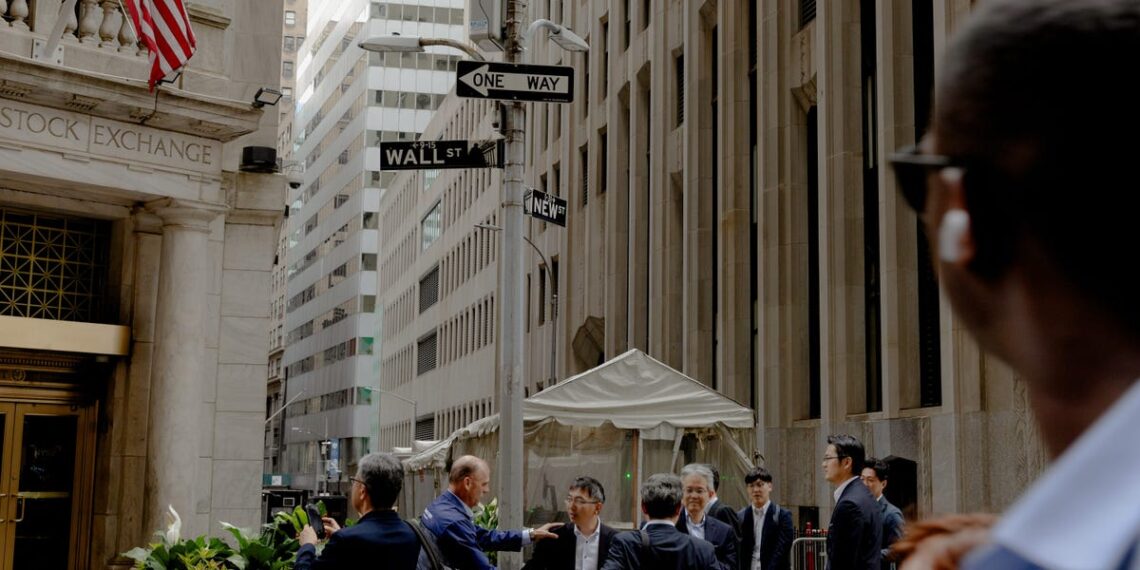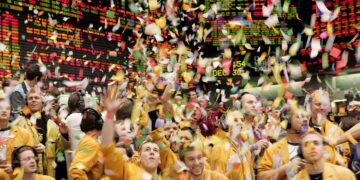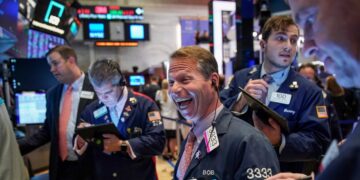If you have $10,000 in cash waiting to be invested, you probably wish you had shoveled that money into the stock market in mid-April.
But you’re not the first, and won’t be the last, investor who missed a good entry point into the market.
Even with the market at all-time highs since hitting a bottom in April, that doesn’t mean it’s a bad time to jump in. Six Wall Street veterans told Business Insider that there are still plenty of pockets of opportunity.
Some, for example, still like tech stocks as AI investment booms. Some of those same people also think it’s smart to hedge and diversify right now amid the hype and lofty valuations. They recommend allocating some money to areas like value or international stocks.
There’s no one-size-fits-all approach to investing. Figuring out where to put your money depends on your individual circumstances, like your investment timeline and risk tolerance.
For this hypothetical thought exercise, we asked our sources where they themselves would invest the money if they suddenly came into $10,000.
Gabriela Santos, chief strategist for the Americas at JPMorgan
Santos said that if she were gifted $10,000 right now, she would invest $7,000 in developed-market ex-US stocks and the remaining $3,000 in emerging-market stocks.
“After 15 years of disappointment, it’s really been all about international equities this year — huge outperformance, and something we see as just the beginning,” Santos said.
Santos is still bullish on US stocks, but said that international stocks are primed for relative outperformance given how high valuations are on US stocks. Historically, US stocks have traded at a 15% premium to international stocks, but now trade at a 35% premium. Plus, the value of the US dollar has fallen in recent months, and demand for ex-US assets has risen.
“For someone, maybe like me, who’s been too concentrated just on the US equity story, I think we’ve really seen a huge turning point to put some of that money to work overseas finally,” she said.
Two examples of exchange-traded funds that offer exposure to these areas include the Vanguard FTSE Developed Markets ETF (VEA) and the iShares MSCI Emerging Markets ETF (EEM). Year-to-date, the funds are up 19.7% and 18.6%, respectively.
Barry Bannister, chief US equity strategist at Stifel
Bannister identified three baskets of opportunities: value stocks, small-caps, and international stocks.
For value stocks, he said to go with a large-cap value fund like the Vanguard Value ETF (VTV). For small-caps, the iShares Russell 2000 ETF (IWM) works well for its broad-based nature having exposure to the growth and value factors, Bannister said. And for international stocks, Bannister like the iShares MSCI ACWI ex US ETF (ACWX).
These trades provide diversification from a tech-concentrated market, Bannister said.
“Right now the market’s obsessively focused on tech. But it’s hard to run an economy on seven stocks,” Bannister said, referring to the so-called Magnificent Seven stocks.
Bannister said he recently put long-term bets on these trades himself.
“I actually put a third, a third, a third, into small-cap, international, and value on some money that came in in May that I got, and we’ll see how it works out for 10 years,” he said.
Hank Smith, CIO at Haverford Trust
Normally, Smith would simply recommend a broad market index so that your money is well diversified. There’s only one problem with that: most main indexes aren’t all that diversified at the moment, with the so-called Magnificent Seven stocks making up almost a third of the S&P 500.
So Smith has an easy fix: Put 50-60% of the money into an equal-weight S&P 500 fund, like the Invesco S&P 500® Equal Weight ETF (RSP), rather than the more widely followed market cap-weighted index. The equal-weight product gives you the same exposure to all 500 companies in the index instead of adjusting for exposure by company size.
The equal-weight index has generally underperformed over the last five years, but it would hypothetically suffer less downside in a tech sell-off.
The remaining 40-50% of the money can go into a more concentrated cap-weighted index like the tech-heavy Nasdaq 100, Smith said. That way, you don’t miss out too much if the tech rally keeps ripping.
“Now you get all your top tech holdings that are driving this market,” he said.
Smith’s suggestions assume at least a five-year timeline.
Michael Kantrowitz, chief investment officer at Piper Sandler
Unlike Santos, Kantrowitz is still bullish on the American exceptionalism theme and would continue to bet on the US stock market for the next few years.
Kantrowitz doesn’t have a specific sector slant — he recommends investing in large-cap profitable leaders within their industries.
“The earnings backdrop is going to be very bifurcated, and interest rates are going to remain elevated,” Kantrowitz said of the next few years. With this backdrop, existing large-cap winners will continue to perform and have better earnings revisions than their peers.
Kantrowitz would avoid passive sector indexes like a broad tech ETF, as those often don’t accurately reflect the performance of the underlying basket of stocks due to weighting criteria. Instead, he recommends a more active stock-picking approach.
The largest names that are screening well in Piper Sandler’s models include Big Tech names — unsurprisingly, Nvidia, Microsoft, Alphabet, and Meta make the list — and companies like Oracle, Costco, Johnson & Johnson, and Home Depot.
Tony DeSpirito, head of US fundamental equities at BlackRock
DeSpirito, who manages several funds with a focus on combining value and quality, would split his investment between large-cap growth companies, dividend stocks, and value stocks. His guiding principle is building a well-diversified portfolio that can weather market volatility, given tariff headlines.
The S&P 500 has undoubtedly become more expensive and growth-oriented thanks to the dominance of tech, but it’s still a good idea to maintain exposure to Big Tech, according to DeSprito.
“I’m not negative on the Mag Seven,” DeSpirito said. “Many of them have really good growth and really good free cash flow. That’s an incredibly powerful combination, and so they earn the multiples that they’re trading at.”
For diversification, dividend stocks tend to be more resilient during downturns and provide a steady stream of income. DeSpirito is also on the hunt for unloved stocks that are trading cheaply.
Healthcare companies are an especially compelling opportunity at the intersection of value and quality, according to DeSpirito. This area of the market has been largely ignored by investors, with the S&P 500 healthcare sector down 2% year-to-date.
DeSpirito likes medical device companies, as these trade at mid-teens earnings ratios with good growth prospects. However, some large-cap pharmaceutical companies could be value traps, as their earnings are heavily dependent on patents, DeSpirito warned.
Lara Castleton, US head of portfolio construction and strategy at Janus Henderson
For investors with a longer timeline and a higher risk tolerance, Castleton suggested a three-pronged approach in equities.
First, plug around 60% of your funds into large-cap stocks with a bias toward tech. Despite its comeback rally after a sharp dip earlier this year, tech is “still one of the areas and sectors that’s going to dominate the markets for the next 10 years” given the innovation coming out of the sector, Castleton said.
There are multiple ways to get exposure to the tech theme, but some general example funds might include the Technology Select Sector SPDR Fund (XLK) and the Invesco QQQ Trust (QQQ).
Second, put about 20% of the fund into ex-US stocks. International stocks have gotten a big boost this year amid Trump’s trade war and initial pullback from US support in Ukraine, and Castleton thinks the rally can continue.
“You have to have some of that diversification because I truly believe going forward that you’ll continue to see value coming out of Europe, some of these ex-US players that are now all of a sudden shifting their mentality to spending more on defense, to deregulating their companies,” she said.
Third, Castleton said to put the remaining 20% into mid-cap stocks, or companies with a market cap between $2 and 10 billion. This can provide further portfolio diversification, Castleton said, but the stocks should also benefit from reshoring as the deglobalization trend continues.
“They’re more domestically-oriented companies, and they also have a lot more room to grow than the large caps that have already kind of established their business models,” she said.
Read the full article here








